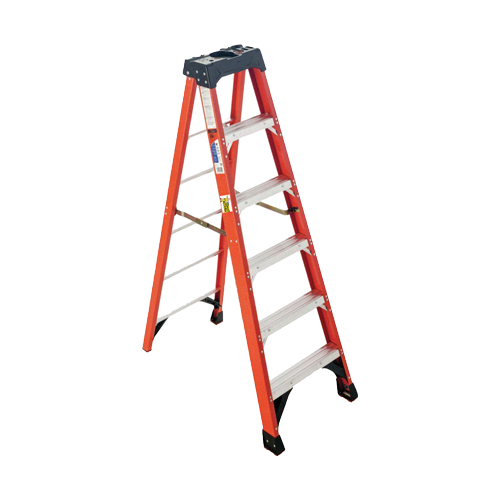Typically, your work environment is the most crucial thing to consider when selecting and buying job site equipment. Managers of warehouses and construction sites are highly picky about purchasing equipment that is both durable and affordable.
Before workers are permitted to touch any equipment or accessories that will be used in the job, they should undergo a thorough examination, and this is particularly true for ladders. Inadequate ladders or a lack of understanding about the proper way to use them is one of the leading causes of the rise in workplace fatalities: A recent study done by the United Kingdom’s Health and Safety Executive revealed some disturbing statistics – In the course of a single year, 35 deaths, 4654 severe injuries, and 7065 minor injuries (minor injuries force employees to miss 3-7 days of work) happened in Britain’s workplaces, and this does not include any incidents in which someone was unable to work for a few of days! The worrying element is that the vast majority of these tragedies might have been prevented by implementing safe working procedures and providing adequate training on the usage of equipment.
Better Investment
One of the first things company owners realize about fiberglass ladders is that they are often costlier, but they should be seen as an investment rather than a waste of money. As with any piece of equipment, it is essential to adhere to specific guidelines to preserve its life and durability. And if you take care of your fiberglass ladder, it will take care of you! Fiberglass ladders have distinct advantages over aluminum or hardwood ladders (depending on the intended application): Fiberglass ladders are an entirely man-made product; consequently, the quality of the raw materials can be strictly regulated and monitored, reducing the likelihood of any flaws. In general, fiberglass ladders are consistently durable and produced with great care, so the likelihood of failure or breakage is minimal. Nevertheless, you should constantly inspect your ladder for damage before to use!
Durability
Durability is another crucial aspect of the fiberglass ladder. In contrast to wood, which degrades with time (particularly if kept outdoors for a lengthy amount of time – god loves the British climate!), fiberglass ladders do not deteriorate. However, UV rays are not suggested for fiberglass, so while you’re not using the ladder, it’s better to keep it out of direct sunshine (again, not an issue in the British summer!)
Non-conductive to Electricity
But arguably the greatest benefit of fiberglass ladders is that they are not electrically conductive. This is where this ladder excels; where aluminum ladders fail, fiberglass ladders succeed. Because they are very conductive, the former cannot be utilized near electrical wires. Even if your fiberglass ladder contains aluminum rungs, you will be safe unless someone intentionally transmits current through the rungs. Still, electricity cannot flow from one rung to the next. The majority of fiberglass stairs and ladders can withstand up to 30,000 volts.
Fiberglass stairs and ladders are highly durable; in certain cases, they are even stronger than aluminum, depending on the quality of aluminum you choose. With fiberglass ladders, you can anticipate a consistently robust and sturdy product, while various manufacturers produce aluminum ladders of varying grades (thus the need of choosing a recognized ladder firm).
Key Benefits of Fiberglass Ladders
The following are the primary benefits of fiberglass ladders and steps:
- They are poor electrical conductors, making them highly safe in most environments and an electrician’s favorite tool!
- Fire-resistant
- Can withstand diverse weather conditions
- It is uniformly durable because it is entirely man-made.
- And here are a few points to keep in mind while instructing your staff, or even yourself, on the proper and safe usage of a fiberglass ladder:
- The ladder must be sturdy, stable, and of appropriate material.
- The feet of the ladder should be attached firmly; most ladder providers will install feet to new ladders upon request for a minimal price.
- Recommendations provide for a maximum lateral slope of 16 degrees
- Recommendations provide for a maximum back slope of 6 degrees.
- The bottom of the ladder should be positioned on a firm, flat surface, and the top of the ladder should likewise rest against a level, solid surface.
- Maximum working time without a break when using a leaning ladder should not exceed 30 minutes.
Conclusion
Compared to wood and aluminum, fiberglass ladders need somewhat more upkeep. This relies much on how the ladder is handled.
However, the benefits of fiberglass ladders may significantly exceed the downsides, particularly when working near electrical equipment. Simply taking adequate care of your equipment and ensuring that everyone who handles the ladder is properly trained will guarantee the longevity of your fiberglass ladder!

